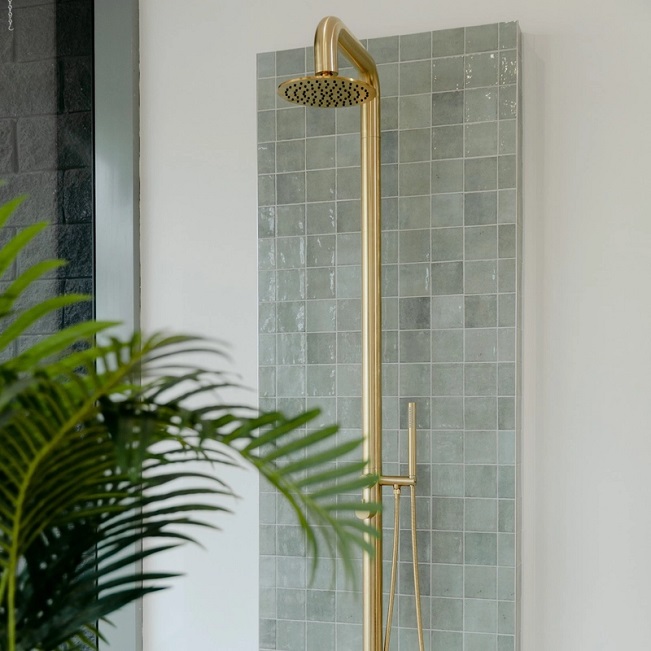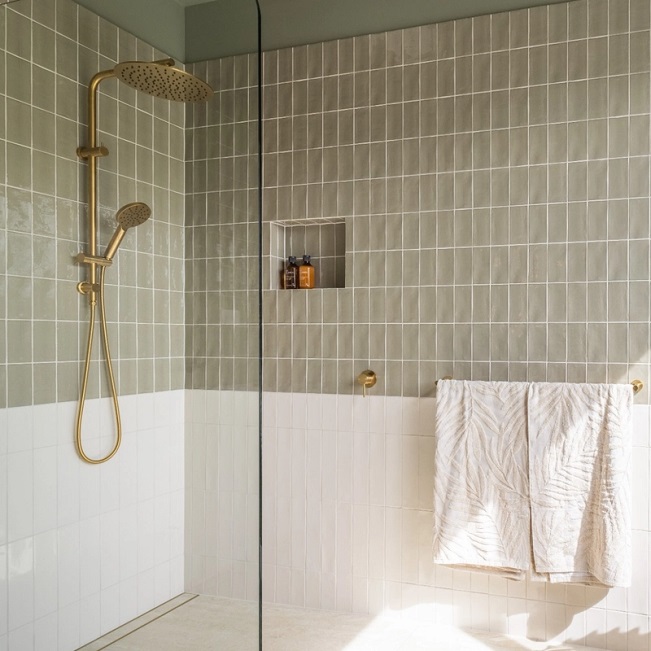The bathroom shower is a staple of modern living, offering more than just a place to clean off after the day. It’s where we wake up in the morning, unwind after long hours, and take a few moments for ourselves. While we may take it for granted, the humble bathroom shower has undergone significant evolution, transforming from a strictly utilitarian fixture into a centrepiece of design, luxury, and personal comfort.
Today, homeowners can personalise their bathroom showers with quality fixtures to match both function and style.
Types of Bathroom Showers

When planning your ideal bathroom shower, the first thing to consider is the type of enclosure. Different designs of efficient bathroom showers suit different spaces and user needs, so finding the right fit is essential.
One of the most common choices is the shower stall or enclosure. These are self-contained units that can be prefabricated or custom-built, with solid walls and a secure door to contain water. They offer excellent water control and are often easier to install, especially when purchased as complete kits. Corner showers are great for small spaces, while alcove showers make use of a three-walled recess. Neo-angle showers, with their uniquely angled front, are ideal for tight corners with a stylish twist. The only downside? Some people may find them a bit enclosed, preferring a more open feel.
That’s where walk-in showers come in. These open-concept setups typically feature one or more glass panels and full doors or curbs, allowing seamless access. They offer a luxurious, spa-like atmosphere and are a top choice for modern homes. Not only are they accessible and sleek, but they’re also easier to clean thanks to fewer corners and crevices. Just keep in mind that they require proper drainage and splash management.
For those with families or space constraints, the tub-shower combo is a timeless classic. This pairing combines a standard bathtub with a showerhead above it, enclosed by either a curtain or a glass door. It’s versatile, practical, and space-saving, especially for small bathrooms. Stepping over the tub edge might not be ideal for everyone, and it doesn’t offer the same elevated experience as standalone showers.
Essential Shower Components
Regardless of the type of bathroom shower, the components inside make all the difference in terms of performance and comfort.
The Showerhead
Start with the showerhead. Fixed or wall-mounted options are straightforward and reliable, but handheld versions offer added flexibility, especially for rinsing or cleaning. If luxury is the goal, rainfall showerheads deliver a gentle, overhead flow that mimics a natural rain shower. For full-body immersion, some homeowners opt for multiple body jets. Dual or combo heads give users the best of both worlds. Features to consider include spray settings, water-saving capabilities, and flow rate.
Faucet and Valve Controls
Faucet and valve controls determine how you interact with your shower. Single-handle designs are simple and sleek, while dual-handle models allow separate adjustment of hot and cold water. Thermostatic valves are a great upgrade, keeping your desired temperature consistent even if someone flushes a toilet elsewhere in the house. Pressure-balancing valves are another safety feature that prevents sudden bursts of hot water.
The Shower Base or Pan
The shower base or pan is the floor of your shower. It catches water and guides it to the drain. Materials range from durable acrylic and fibreglass to luxurious tile or solid surface options. Low-threshold or curbless bases are ideal for accessibility, offering smooth, step-free entry.
Shower Walls
For shower walls or surrounds, tile remains the go-to for its versatility and style, but acrylic or fibreglass panels offer low-maintenance alternatives. Solid surface and natural stone materials give a seamless, high-end finish. The goal is to ensure the area is fully waterproof while complementing your overall bathroom design.
Shower Doors or Curtains
Then comes the matter of shower doors or curtains. Frameless glass doors provide a modern, minimalist look and open up the visual space, while framed or sliding doors offer more structure and affordability. Fabric or vinyl shower curtains are a classic, budget-friendly choice and are easy to update when your style changes.
Considerations When Planning Your Shower

Planning the perfect shower starts with understanding your bathroom’s size and layout. A small guest bathroom might only accommodate a corner stall, while a master ensuite could host a walk-in shower or wet room. Budget is another critical factor. Prefabricated shower units for sale are typically more affordable than fully tiled custom showers. Your choice of materials and fixtures will also impact the final cost. Solid surface walls and thermostatic valves, for instance, cost more but add long-term value.
Don’t overlook water pressure. Low pressure can hinder certain showerheads, especially those with rainfall or multiple jets. Proper ventilation is essential to prevent mould and mildew. Install a quality exhaust fan or ensure there’s a window to maintain airflow. Accessibility should be part of your plan, especially if you’re considering ageing in place. Curbless showers, non-slip flooring, grab bars, and built-in seating can make the space safer and more user-friendly.
Crafting Your Perfect Shower Experience
Bathroom showers are far more than just a place to rinse off. They’re a personal retreat, a functional necessity, and a design opportunity all rolled into one. From compact alcove stalls to open-concept wet rooms, there’s a solution for every space and every lifestyle.
Understanding the different types of showers, their key components, and the planning considerations involved can help you make informed choices that elevate your everyday routine. Whether you’re browsing shower units for sale or working with a designer on a custom build, your dream bathroom shower is well within reach.
























